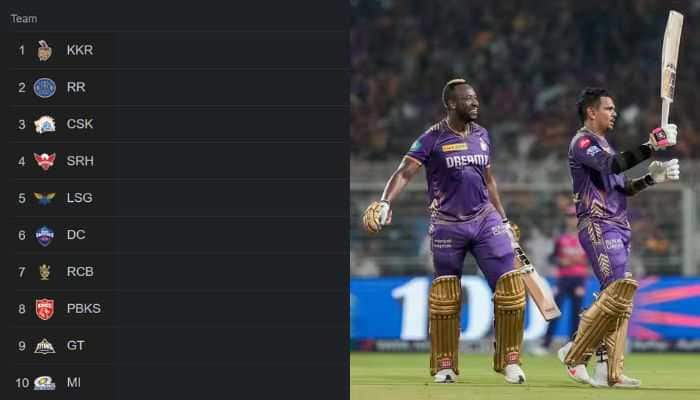GSLV Mark-III successfully launched; India closer to manned space mission
India's heaviest and next generation rocket-Geosynchronous Satellite Launch Vehicle (GSLV-Mark III) carrying a crew module was blasted of at 9:30 am on Thursday.
Trending Photos
1:15 pm: Chhattisgarh Chief MInister Raman Singh congratulates ISRO team.
On the successful launch of GSLV Mk - III, I congratulate the team at @isro . #ISRO has done it again.
— Dr Raman Singh (@drramansingh) December 18, 2014
11:30 am: Congress leader PL Punia congratulates ISRO for GSLV) Mark-III's successful launch, says it's a proud moment for the nation.
10:00 am: Prime Minister Narendra Modi congratulates all the ISRO scientists for Geosynchronous Satellite Launch Vehicle (GSLV) Mark-III's successful launch. Here's what he said:
Successful launch of GSLV Mk-III is yet another triumph of brilliance & hardwork of our scientists. Congrats to them for the efforts. @isro
— Narendra Modi (@narendramodi) December 18, 2014
9:54 am: ISRO has successfully carried out human crew module experiment. The module has safely splashed down into Bay of Bengal off Andaman and Nicobar Islands, says Radhakrishnan.
9:53 am: The ISRO chief congratulates his team on the highly successful launch.
9:52 am: ISRO chief Dr K Radhjakrishnan confirms successful launch of GSLV III, terms it a very significant day for India.
Video of GSLV Mark-III launch:
9:47 am: Scientists rejoice as GSLV Mark-III successfully launched.
9:45 am: Main parachutes of the Crew Module Atmospheric Re-entry Experiment (CARE) module deployed successfully, says ISRO
9:40 am: CARE module in its tense atmospheric re-entry.
9:34 pm: The CREW module has been separated from the rocket.
LVM3 X / CARE Mission Update: CARE module separated and started its descent.
— ISRO (@isro) December 18, 2014
9:30 am: ISRO's experimental mission to test heaviest GSLV Mk-III rocket and human crew module lifts off from Sriharikota.
9:00 am: ISRO all set to launch the next generation rocket.
T-30 Minutes to the launch of LVM3 X / CARE Mission. pic.twitter.com/iIoB947Mjv
— ISRO (@isro) December 18, 2014
12:05 am: ISRO reveals exclusive picture of GSLV-Mark III Wednesday night.
Night falls on 2nd launchpad at Sriharikota, revealing the LVM3 X launcher in all its grandeur. pic.twitter.com/GCSb3U7at8
— ISRO (@isro) December 17, 2014
2:00 pm (Wednesday): UH25 propellant has been filled to the 2nd Stage - L110. N2O4 propellant filling of 2nd Stage is in progress.
9:00 am (Wednesday): The 24 and a half hour count down for the launch has commenced.
Though called a crew module, it will not carry any living being and is being sent up only to test its re-entry characteristics.
The 630 tonne rocket will be powered by liquid and solid fuel engines while the cryogenic stage/engine will be a passive one.
As per the plan, soon after the lift-off at Sriharikota, Indian Space Research Organisation (ISRO) would study the flight validation of the complex atmospheric flight regime of LVM 3 and would also test the ability of the CREW module to re-enter the Earth’s atmosphere with thermal resistance, parachute deployment in cluster formation, aero braking system and apex cover separation procedures.
The CREW module would be separated from the rocket about 325.52 seconds after the lift-off at 126.16 km altitude. The specially made parachutes would help the module ‘soft-crash’ in the Bay of Bengal, some few hundred km from Indira Point in the Andaman and Nicobar Islands, which would later be fetched by Indian Coast Guard ships.
The module will splash down 600 km from Port Blair and 1,600 km from the space centre. The capsule will be recovered by an Indian Coast Guard or Indian Navy ship.
While the rocket cost ISRO Rs 140 crore, the crew module has taken another Rs 15 crore.
The crew module, looking like a giant-size cup cake - black in colour on top and brown at the bottom - weighs around four tonnes.
According to an ISRO official, it will be in the size of a small bedroom and can accommodate 2-3 people.
Realisation of 42.4 metre tall GSLV Mk-III would help ISRO place heavier satellites into orbit.
GSLV Mk-III is conceived and designed to make ISRO fully self-reliant in launching heavier communication satellites of INSAT-4 class, which weigh 4,500 to 5,000 kg. It would also enhance India’s capability to be a competitive player in the multi-million dollar commercial launch market.







)
)
)
)
)
)
)
)
)
)
